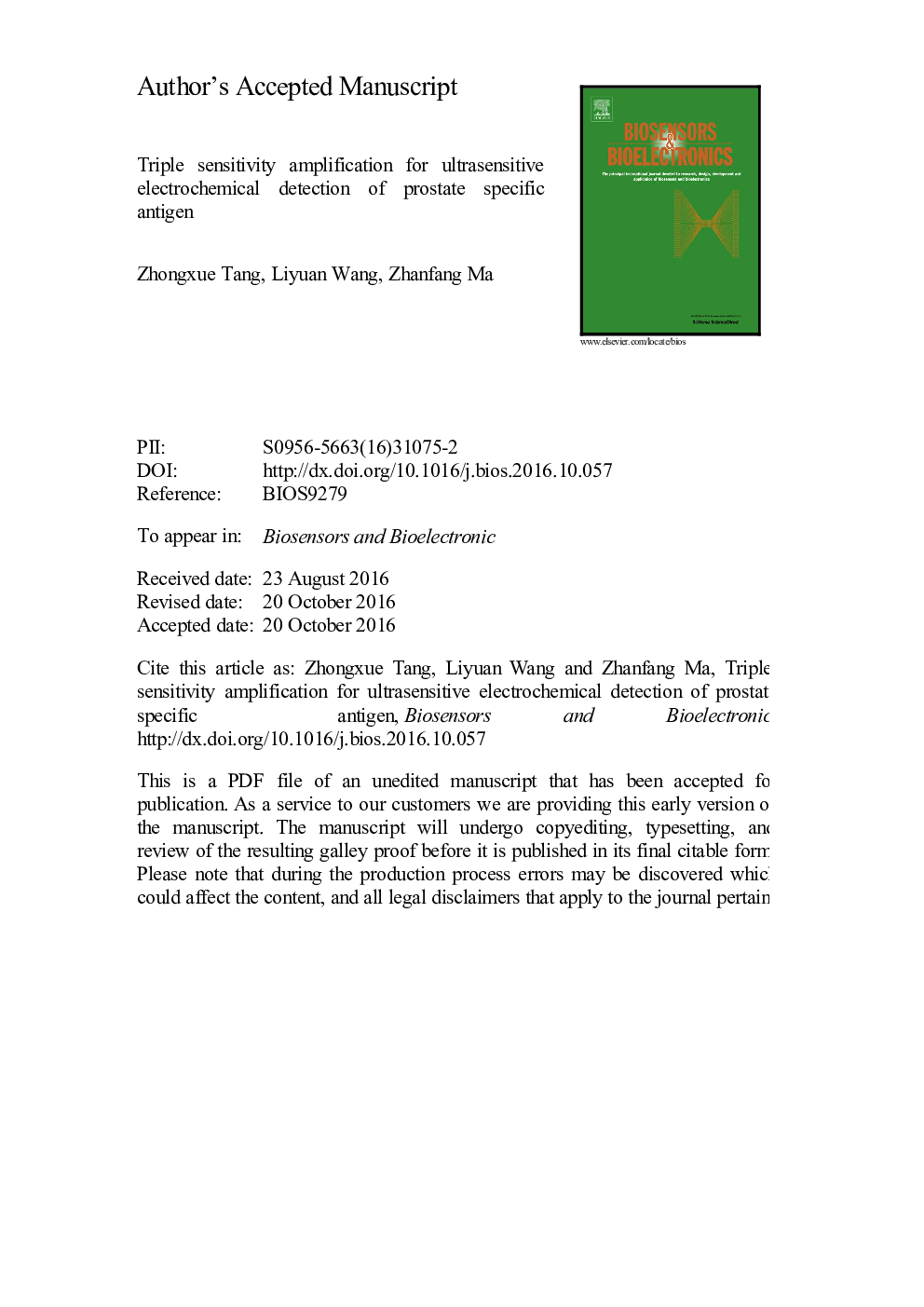| Article ID | Journal | Published Year | Pages | File Type |
|---|---|---|---|---|
| 5031641 | Biosensors and Bioelectronics | 2017 | 20 Pages |
Abstract
In general, current difference (ÎI) due to immunoreactions is significant in determining biosensor sensitivity. In this work, a new strategy of triple sensitivity amplification for ultrasensitive electrochemical detection of prostate specific antigen (PSA) was developed. Au-poly(methylene blue) (Au-PMB) was implemented as a redox species with strong current signal at â0.144 V and used to fabricate the substrate of the biosensor. Conductive reduced graphene oxide-Au nanocomposites (Au-rGO) were coated on the Au-PMB modified glassy carbon electrode (GCE) to amplify current signal. After peptides (CEHSSKLQLAK-NH2) were fixed on the Au-rGO/Au-PMB/GCE, the fixed peptides reacted with glutaraldehyde to immobilize polydopamine-Au-horse radish peroxidase nanocomposites (PDA-Au-HRP). The electrochemical sensing interface for PSA was realized. Due to smaller resistance compared to antibodies, the peptides which can be cleaved specifically by PSA were employed. After the incubation of PSA, a large ÎI was obtained and behaved as the decrease of current signal. Then the remaining PDA-Au-HRP accelerated an enzyme-catalyzed precipitation reaction between 4-chloro-1-naphthol and H2O2. A further decrease in current signal (namely the increase in ÎI) resulted from the poorly conductive precipitation adhering onto the biosensor. The designed biosensor presented a wide linear range from 1.0 fg mLâ1 to 100 ng mLâ1 with an ultralow detection limit of 0.11 fg mLâ1.
Related Topics
Physical Sciences and Engineering
Chemistry
Analytical Chemistry
Authors
Zhongxue Tang, Liyuan Wang, Zhanfang Ma,
